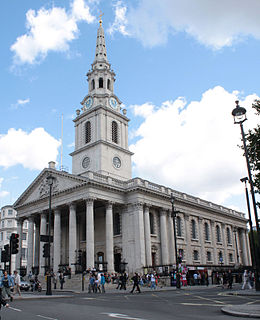The minister of that church was the Rev. Henry Caner. He raised a niece named Sarah Foster, whom he called Sally. I don’t know how that arrangement came about since Sarah’s father, a deacon of Boston’s First Meetinghouse named Thomas Foster, was alive. Perhaps he had remarried.
The minister was very fond and protective of his niece, telling Earl Percy that he “took the Liberty of introducing [her], as my Daughter, which she really is, tho’ but an adopted one.”
In March 1768 Sarah Foster married John Gore, Jr., a dry goods merchant. His father had risen from the trade of decorative painter to become a paint merchant, militia captain, and Overseer of the Poor—moving from the ranks of mechanics to the ranks of gentlemen.
John and Sarah Gore had a baby, also named John, in 1769. He was baptized at the West Meetinghouse, which the Gore family attended. Evidently being raised by an Anglican minister hadn’t made Sarah an Anglican.
In 1771 John, Jr., unexpectedly died. That left Sarah Gore as a young widow with a baby son. I don’t know if Sarah Gore moved back in with her uncle then, but the Caner household was undoubtedly less crowded than the Gore household.
Then came the Coercive Acts and the war. The Rev. Mr. Caner was always one of the strongest supporters of the royal government. When the lines were drawn in 1774, Capt. John Gore also declared himself loyal to the king while most of his family, including son Samuel and son-in-law Thomas Crafts, were not only Patriots but active Patriots.
In March 1776, the British military evacuated Boston. Among the Loyalists leaving at the same time were Henry Caner, John Gore, Sarah Gore, and her little boy. “I was crowded with my Daughter & an old Houskeeper on board a small Vessel with forty people,” the minister wrote.
That extended family then moved on to London. The letters of Henry Caner, which were collected and published in 1972, show that in London Sarah Gore lived with Caner and that “old Houskeeper.” John Gore shared space with his friend Adino Paddock.
Caner spent a lot of effort trying to find a new income for himself as an Anglican cleric. Sarah Gore explored high social circles, visiting Lady Rockingham, meeting the Duke and Duchess of Northumberland. Her uncle hoped these connections would lead to a living, but in July 1776 complained, “I meet with many ‘good Morrows’ & compassionable expressions, but that is all except a share of the Donations…for the suffering Clergy.”
On 22 Apr 1777, the Rev. Mr. Caner had big news for Deacon Thomas Foster:
Sally, who will write you by this Opportunity, has never been from me a Day since we left Boston. She had far’d as well as my Self, & has been fully attentive to me as to her Father, having never taken a step which I did not approve.A postscript to that letter reports the deed had been done: “Yesterday I parted with your Daughter, my dear Child & companion, Sarah Gore, having married her to Mr. Richard Manser, of London. I performed the Ceremony myself at St Martin’s Church, Westminster.”
I have preserv’d her from a Connection with the Army, which I knew would be disagreeable to you, & in right of a Guardian or Father am about to dispose of her within a day or two to a Gentleman here in London, one Richard Manser, who appears to be a sober, well-bred young man, with whom I hope she will be happy.
They will live in the same house with me while I stay in England, & when we return to America I assure you I shall leave her behind me with regret.
That’s the famous church of St. Martin-in-the-Fields, rebuilt in the 1720s and shown above in a photo by Robert Cutts. [It has a lovely café in the crypt.]
However, by 30 June the Rev. Mr. Caner was once again referring to Sally as “Mrs. Gore.”
TOMORROW: Can this marriage be saved?

No comments:
Post a Comment